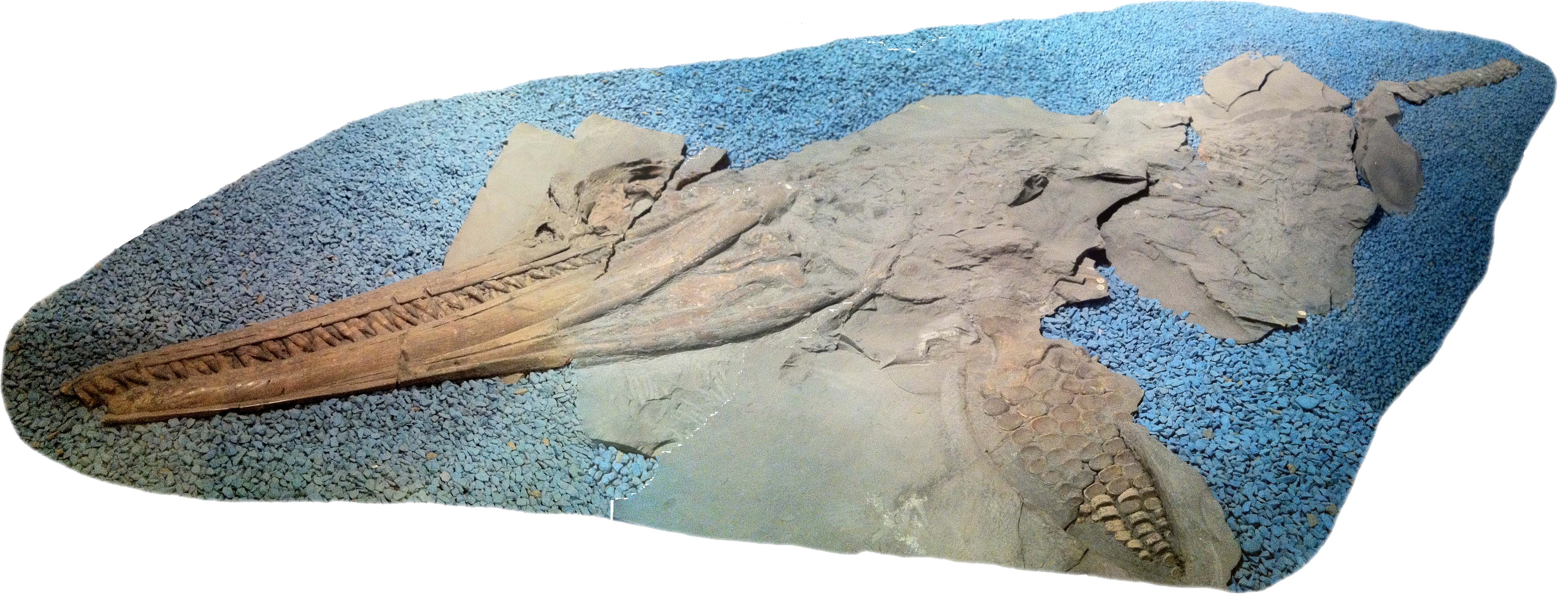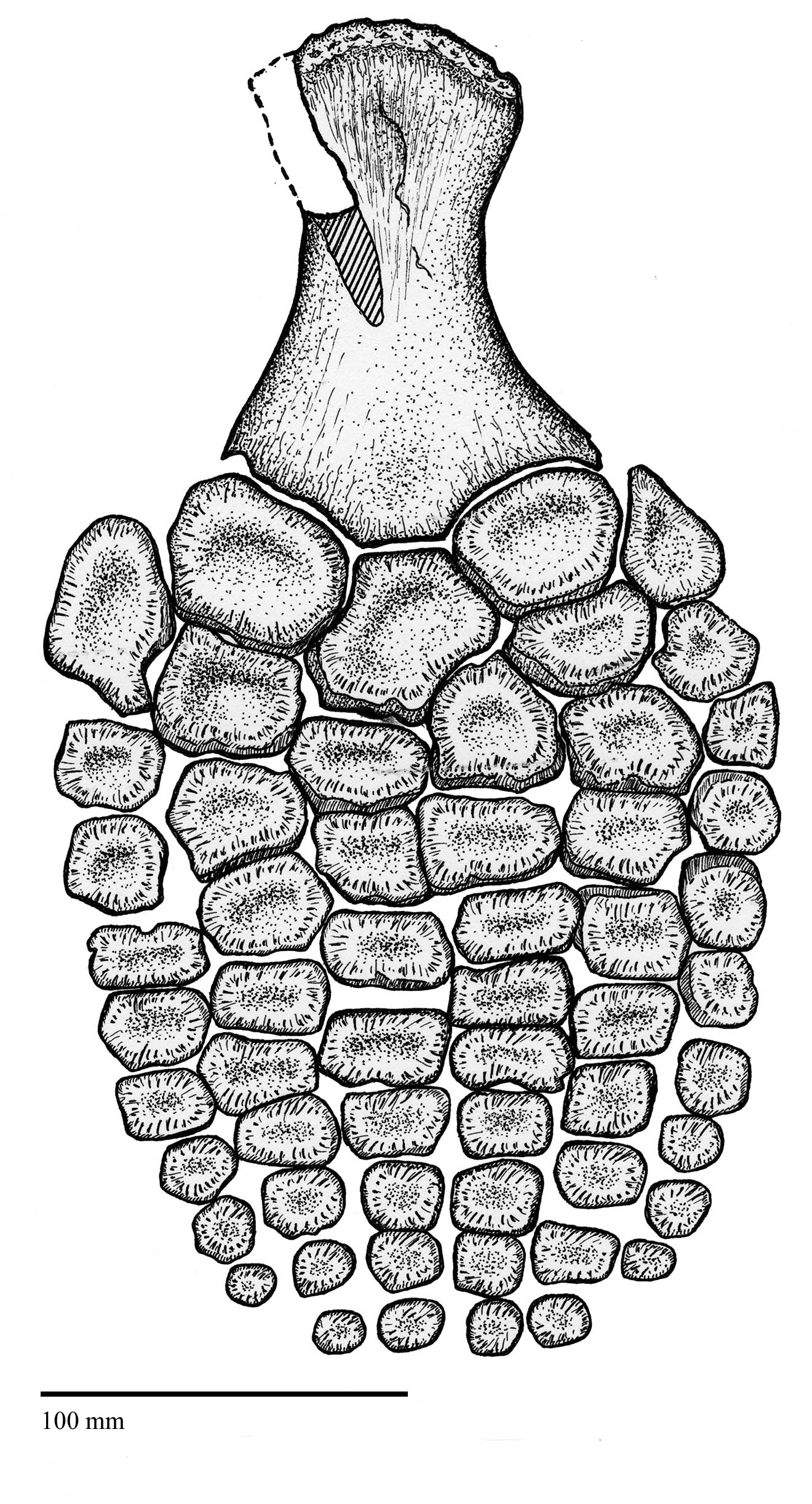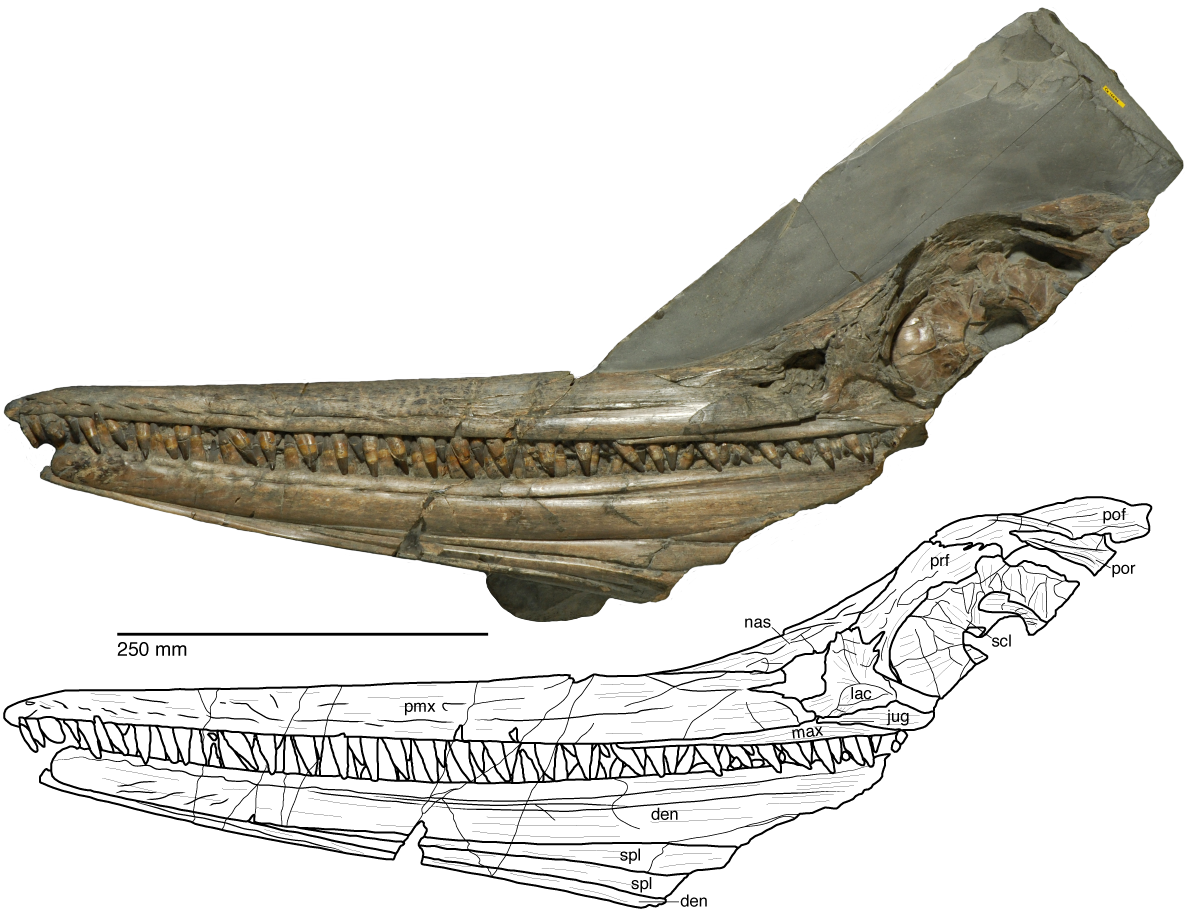Grendel strikes again!
Remember this little critter?

This is the ichthyosaur formerly known as Grendelius mordax McGowan, 1976. This name comes from the monster Grendel from the Old English epic Beowulf; roughly, it means ‘Grendel-like bite’. Before 1997, all the material known of Grendelius mordax was a crushed, but pretty nicely complete skull, and some bits of vertebrae and shoulder girdle; almost all of which is in the Sedgwick Museum, Cambridge (see below).

Way back in 1904 (a,b), Boulenger gave the name Ichthyosaurus extremus to a paddle from the Kimmeridge Clay (Upper Jurassic) of Weymouth, Dorset, UK. The shape of the bones, made it obvious that this was a type of ichthyosaur. However, its humerus was unusual in joining to three paddle bones (three distal facets, similar to Ophthalmosaurus): the ulna, radius and intermedium.

What does Ichthyosaurus extremus have to do with Grendelius mordax, I hear you cry?
These ichthyosaur names show a good example of how scientific names for animals change, based on new discoveries. This is managed by the International Commission on Zoological Nomenclature (ICZN; which can be translated as ‘the Lords of Animal Names’, although I’d imagine this is the first time it’s happened). This body has published guidelines on how to name, write and change names of animals. It is the ICZN, following the rules first contrived by Linnaeus, who requires animal names to contain two parts (binomial nomenclature): a generic name, e.g. Ichthyosaurus, and a specific name, e.g. Ichthyosaurus extremus. (The genus is the first part, but the species always contains both.) Both the species and genus has a unique defining set of characters, but a genus can have many species, each subtly different — e.g. Ichthyosaurus has Ichthyosaurus communis, Ichthyosaurus breviceps, Ichthyosaurus conybeari and more.
Back to Ichthyosaurus extremus. In 1922, Friedrich von Huene wrote a book about ichthyosaurs. Here he noted that many ichthyosaurs were different enough from each other to split them into separate genera (sing. genus). Before, most ichthyosaurs had been put into the genus Ichthyosaurus. Huene (1922) changed the names of Ichthyosaurus enthekiodon to Nannopterygius enthekiodon (Huene 1922, p. 98), based upon it’s tiny paddles, and Ichthyosaurus extremus became Brachypterygius extremus (Huene 1922, p. 97), for the short and wide paddle.
When the fossil of Grendelius mordax above was described and named, only isolated paddles had been found that were certainly Brachypterygius. Only a head was known for Grendelius mordax, and so the two were thought to be different, hence the different names.
Then, in 1997, a small note came out in Journal of Vertebrate Paleontology (McGowan 1997). This showed a new specimen in the Bristol Museum (Ce 16696); the one in the picture at the top. As an ichthyosaur specimen, this is a good example: preserved on its side, substantially complete with little disruption of the bones. The skull was prepared, and upon studying this, Christopher McGowan could confirm it as Grendelius mordax — but now, the skull came complete with a body, and most importantly: a paddle! (I’m sure you can guess where I’m going with this.)
Of course, this paddle was characteristic of Brachypterygius extremus. So this ichthyosaur, with the head of Grendelius and the paddle of Brachypterygius, showed that what was thought to be two different animals were the same. The problem then was: what do you call it?

Fortunately, the ICZN have guidelines for this too! Unfortunately (in this case), the rule is that the earliest valid name has priority — there can be exceptions, as is likely in the case of Ophthalmosaurus icenicus. Brachypterygius is the older name — both originally and its changing — so Grendelius became Brachypterygius, depriving us of such a good name (to save confusion, disused names cannot be applied to other animals).
What about the species? Does it become Brachypterygius extremus, or Brachypterygius mordax. McGowan (1997, p. 430) left this unsettled pending further preparation, study and comparison to the type specimens of Brachypterygius extremus and Brachypterygius “Grendelius” mordax. In this post, I’ve left it as Brachypterygius sp., i.e. a species of Brachypterygius. One of my tasks, as part of my PhD is to take this on: watch this space…
Bibliography
BOULENGER, G. A. 1904a. On a new species of ichthyosaur from Bath. Proceedings of the Zoological Society of London, 1904, 424–426.
—— 1904b. Abstracts to the Proceedings of the Zoological Society of London, March 15th, 1904. Proceedings of the Zoological Society of London, 1904, 18.
HUENE, F. R. V. 1922. Die Ichthyosaurier des Lias und ihre Zusammenhänge. Verlag von Gebrüder Borntraeger, Berlin, 114 + 122 pl pp.
MCGOWAN, C. 1976. The description and phenetic relationships of a new ichthyosaur genus from the Upper Jurassic of England. Canadian Journal of Earth Sciences, 13, 668–683.
—— 1997. The taxonomic status of Grendelius mordax: a preliminary report. Journal of Vertebrate Paleontology, 17, 428–430.
—— and MOTANI, R. 2003. Ichthyopterygia. In Handbook of Paleoherpetology. Verlag Dr. Friedrich Pfeil, Munich, 175 pp.

Leave a comment